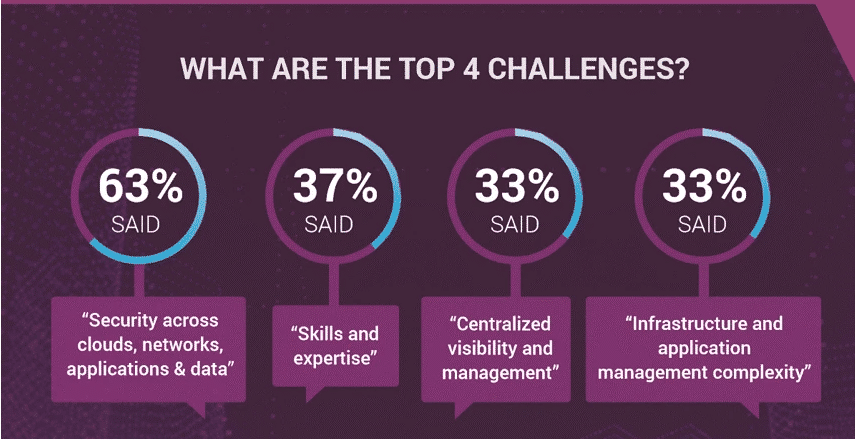A10 Networks: Benefits of Application Delivery for Multicloud Architectures
Guest blog alert! We’re excited to have Takahiro Mitsuhata, Sr. Manager of Technical Marketing, from our partner at A10 Networks joining us in the blogosphere today to talk about their upcoming OktoberTekfest webinar, “Leveraging the Benefits of Multi-cloud Architecture.” He will be joined by Paul Nicholson, Sr. Director of Product Marketing for the webinar. Mitsuhata brings 15 years of experience in security and networking, with a focus on DDoS protection and application networking. Taka manages the Technical Marketing function at A10 Networks in San Jose, Calif, providing solutions for customers ranging from enterprises to service providers.
Their webinar session goes live on October 1st in our Tekfest Learning Center. Get a glimpse of all you can learn in their blog below and don’t forget to register for OktoberTekfest!
There is no question that multicloud application deployments now play a foundational role in everything from internal business needs to digital transformation initiatives — but it’s also essential for IT operators to ensure effective visibility, governance, security, and control across both public clouds or private clouds as multicloud deployments mature into standard IT and operational realms.
The Fact: Multicloud Complexity
According to a global survey report for current state and future direction of multi cloud deployments, conducted by the Business Performance Innovation (BPI) Network, in partner with A10 Networks, most organizations confront major challenges in ensuring security and best practices across the cloud environments in use. They also face challenges in operating multicloud infrastructures with limited IP resources and expertise and improving service visibility and operation efficiency in such complex multicloud environments where all resources and data are distributed across all clouds. 
As companies leverage a multicloud strategy to provide better services to their users, they cannot afford to overlook the implications for security. Meanwhile, there are many issues such as creeping complexity, non-existent cross-platform visibility, and different security standards on each vender’s platform. As a result, most companies end up in a more complex multicloud setup than they had envisaged.
What is a Polynimbus Application Delivery Controller (ADC)?
Polynimbus is defined as the operations of an enterprise across two or more public clouds or private clouds. The Polynimbus Secure Application Services blueprint outlines the new multicloud operational reality enabling higher availability, consistent security and manageability, and greater simplicity and agility for organizations as they tackle the complexities of the multicloud world. Adoption of the blueprint can mitigate multicloud risk and operational challenges, improve compliance, accuracy, and meet DevOps and SecOps needs, with reduced stress on IT personnel.
The Benefits of Having an ADC in Polynimbus Application Services
An application delivery controller (ADC) is a networking device front-ending the appliance servers and/or microservices as a proxy, so that it has real-time and fully visibility into application traffic with control. Here describes how an application delivery controller (ADC) can enable and augment a Polynimbus application services model.
Maximize Application Service Uptime
Server load balancing, one of the core capabilities of the application delivery controller (ADC), provides not only application traffic load distribution among back-end servers but also efficient higher availability or redundancy in case of any server failure or downtime. With the ADC’s traffic control capability, operators can easily enable a modern service deployment and operation such as CI/CD processes and blue/green deployment that can avoid service interruption during new service introductions and/or system maintenance for new code updates.
Intelligent Traffic Management for Global Multicloud Sites
Global server load balancing (GSLB) uses DNS proxy technology to effectively control application traffic globally. As the application delivery controller (ADC) has real-time visibility to the service health and site conditions, a GSLB enabled ADC can intelligently control and distribute the application requests across all available sites/clouds, and automatically failover to another available site in case of any failure. Using geo-location awareness, operators can provide content localization, and also control traffic and data processing for security and regulatory compliance such as GDPR.
Integrated Application Security
It makes perfect sense to turn on security features on an application delivery controller (ADC) to protect application services. This way, operators can enable service protection seamlessly without requiring any configuration changes on application servers. Security features include web application firewall, application access management and control, DDoS protection and so on.
Additionally, in a microservices architecture, each node becomes a very small footprint focusing on one specific function (e.g., web service with specific data only) and little or no security concept on it. ADCs can be deployed with security features for north-south traffic, and even for east-west traffic to protect against unwanted access or to enable data encryption.
Consolidating security functions into network functions helps simplify network design and operation involving both IT operator and security teams.
Consolidated Application Service Traffic Visibility
In a multicloud environment, where all the resources are distributed globally, it would be difficult for operators to gain a good understanding of the entire application service quality and status. It is essential to have consolidated and deeper service visibility and analytics from a business and OPEX planning perspective. Tracking service status and quality by checking latency or response time will greatly help service monitoring, early failure detection and quick troubleshooting in a complex multicloud environment.
Components of A10 Networks’ Polynimbus Solution
- A10 Thunder® ADC, including SLB, GSLB, TLS/SSL offload, WAF, application access management (AAM) and DDoS protection are included. These applications services are available in physical, bare-metal, virtual, for public and private cloud, and container form factors.
- A10 Harmony® Controller provides centralized application analytics and management for A10 Thunder across any cloud. It integrates with third-party cloud infrastructure for agile automation and orchestration. It is available in physical, virtual form factors and as a SaaS offering.
Powered by A10 Thunder ADC, Polynimbus mindsets and practices will be the most effective way to ensure that multicloud compliance, security policies, functionality, and expectations are met, while easing the burden of over worked and stressed IT and security teams.
Additional Resources
- Learn more about the security challenges that come with multicloud IT and how they’re being addressed in the complete report, “Mapping the Multi-Cloud Enterprise: Next Steps in Optimizing Business & IT Agility, Efficiency & Security.”
- Secure Application Delivery in Public Cloud Solution
- Secure Application Delivery in Private Cloud Solution
- DDoS Protection Solution




